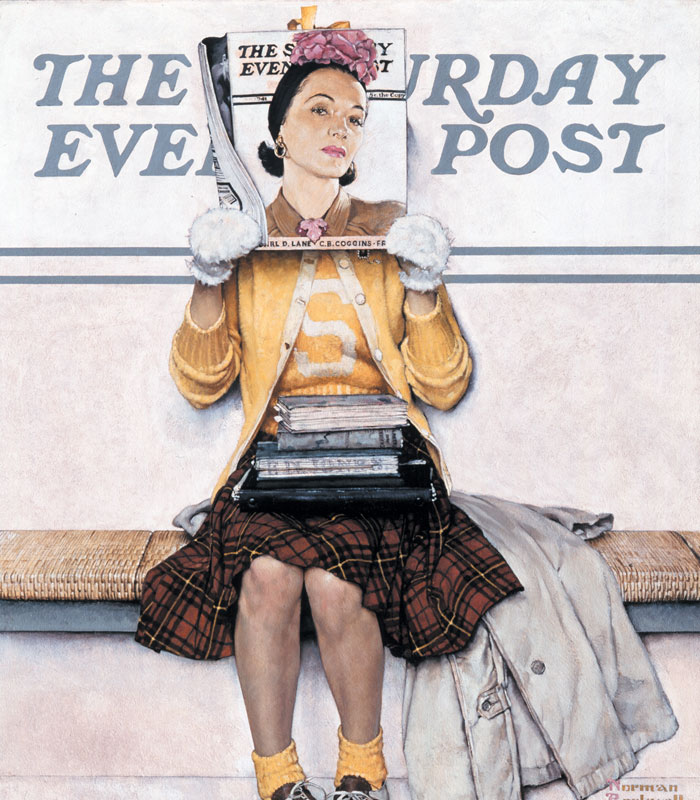Norman Rockwell: Illustrating Humor
June 22, 2024 through June 10, 2025
Norman Rockwell: Illustrating Humor highlights a selection of the artist’s most amusing published illustrations from the Museum’s collection. This humor-inspired exhibition offers insight into the comedic content of eleven finished works spanning Rockwell’s long and distinguished career. Two featured studies demonstrate how Rockwell developed and refined humorous content as part of his artistic process.
The earliest work in the exhibition is Boy with Baby Carriage (1916), an illustration that humorously portrays tensions around shifting gender roles in American society. As Rockwell’s first published cover illustration for The Saturday Evening Post, the painting launched his half–century career entertaining readers of the popular publication with his art.
Encompassing most of the 20th century, Rockwell’s illustrations can be seen to respond to, reflect, and influence the evolution of American humor across the decades during which vaudeville gave way to slapstick film and TV variety shows as American society and culture underwent profound changes.
Rockwell’s works suggest how humor can be used to inspire social change, whether by capturing common experiences with comic undertones or tracking shifting societal norms.
Norman Rockwell as Humorist
Born during the height of vaudeville’s popularity, Norman Rockwell’s (1894-1978) narrative work spans a century of American humor reflecting the slapstick sketches of the early 20th-century stage to the mayhem of television variety shows of the 1960s. Drawn from the permanent collection at Norman Rockwell Museum, this exhibition of over 20 paintings and drawings examines the comical content of Rockwell’s funniest published illustrations and how he composed his scenes to engage and delight his ever-expanding audiences. Rockwell’s humorous innovations shine a spotlight on the changing face of humor in the United States as its citizens recovered from wars, endured The Great Depression, and met the uncertainties of a modern world.
Norman Rockwell came of age during a time when humor in the United States was deeply racist and sexist, and magazines were filled with derogatory depictions of United States citizens who were not Anglo American. These pernicious stereotypes never interested Rockwell, who turned his keen eye to the foibles and follies of his own family, friends, and community. In his earliest published work, Rockwell’s subjects were the pastimes and antics of adolescent boys and the comedic pathos and preoccupations of old men. His art also portrays, with observant admiration, determined girls and strong women. In the ’40s and ’50s, his stories became sequential, with a punch line or a sequence of charming events, such as the joyful activities over one day in the life of a young girl or boy. His late humor relies on an unforeseen circumstance of everyday life or an unlikely/likely pairing as a source of humor, such as his renowned portrait of a befuddled fisherman and his winsome mermaid catch.
IMAGES
RELATED EVENTS
MEDIA
VENUE(S)
Norman Rockwell Museum, 9 Glendale Road, Stockbridge, MA 01262
DIRECTIONS
Norman Rockwell Museum
9 Glendale Road Route 183
Stockbridge, MA 01262
413-931-2221
Download a Printable version of Driving Directions (acrobat PDF).
Important note: Many GPS and online maps do not accurately place Norman Rockwell Museum*. Please use the directions provided here and this map image for reference. Google Maps & Directions are correct! http://maps.google.com/
* Please help us inform the mapping service companies that incorrectly locate the Museum; let your GPS or online provider know and/or advise our Visitor Services office which source provided faulty directions.










